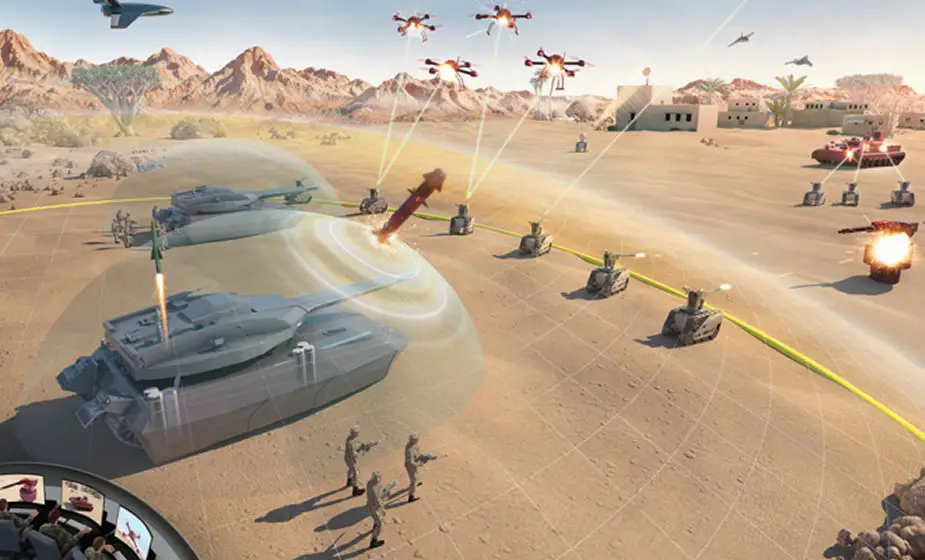At DSEi 2017, the British defense giant BAE Systems revealed a future concept of the tank of the future as an autonomous combat vehicle supported by fleets of smaller autonomous air and ground vehicles, working together in the most demanding combat environments. Whilst soldiers will remain right at the centre of decision-making, the aim is to remove soldiers from some dangers, increasingly using an unmanned network for hazardous tasks.

BAE Systems' concept for a future autonomous tank
(Credit: BAE Systems)
As well as sharing visual reconnaissance information, the network of autonomous air and ground vehicles would act as an outer perimeter for the main battle tank. To achieve this, the vehicles would engage threats and incoming attacks with on-board weapon stations – using conventional ballistics and countermeasures in the short-term before moving to laser directed energy weapons as they become available. By incorporating ‘friend or foe’ tracking, this perimeter could also protect nearby dismounted troops, detecting and neutralising active threats and concealed IEDs.
With the need to process and quickly react to the growing amount of battlefield information, manned platforms will incorporate more autonomous systems, reducing the cognitive burden on human decision makers.
John Puddy, Technology Lead at BAE Systems Land (UK) explained: “We’re already taking steps to develop the vehicles and systems needed for this future concept. Our new unmanned ground vehicle, Ironclad, is being developed to work autonomously as part of a battlegroup and we’re also integrating unmanned aerial vehicles in current vehicle platforms.”
Puddy continued: “No-one can be entirely sure what the future will look like, but we do know that it’s a relatively short step from the technology available today to having a fleet of autonomous vehicles sharing situational awareness and – where appropriate – making certain decisions independently. Today’s active protection systems already make decisions which require ultra-fast reactions such as triggering explosive reactive armour. The pace of development means these reactions need to be faster than ever before.
“The U.S. Marine Corps has said it wants to have an autonomous tank in the next five years, so this could start happening very quickly. The challenge for us at this stage is less around the technology development and more around the debate on the appropriate use of autonomy on the battlefield and questions about the cyber resilience of platforms given the evolving nature of this threat.
“From our expertise in protecting our air platforms from electronic warfare to our position today, BAE Systems has proven capability in managing the evolving threat of cyber-attacks across all domains. When it comes to decisions around the use of force, we are clear there will always be a ‘human in the loop’ in any autonomous system. However, we also know that there are other decisions that humans don’t need to make. It’s a similar debate to the driverless cars that are now being tested on our roads – we are having that debate now so that the UK is able to lead the world in autonomy.”















